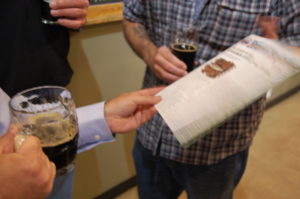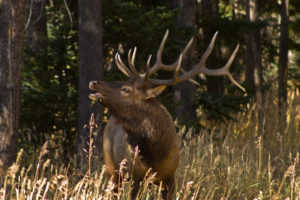For sportsmen, fall means opening day and stalking elk through the Colorado back country. The decrease in anglers (and football on the tube) generally lead to less crowds, but just because there are fewer people fishing, the fish are still there for the taking! As the weather cools, bugs and insects don't hatch as often as in the spring or summer. Making fall fly fishing a little more difficult, but that doesn't mean the fishing has stopped. Brown trout and kokanee salmon spawn in the fall and are moving to find the best place to make their redds,
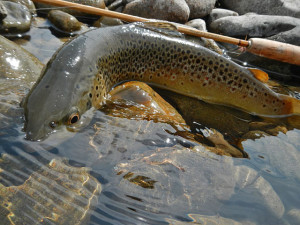 Because of this, fishing where feeder streams and tributaries confluence with larger streams is a good place to look as trout will be moving into these areas to spawn. "While we never advocate fly fishing for actively spawning fish that are on shallow gravel redds, these tributaries allow anglers to predict where to find larger fish," according to Vail Valley Anglers. "Fish in deeper water that aren’t on beds are fair game and with a quick, gentle release they will be free to continue their mission to propagate the species. Be aware some small tributaries are closed during the spawn because the trout are simply too vulnerable in these tiny creeks."
Because of this, fishing where feeder streams and tributaries confluence with larger streams is a good place to look as trout will be moving into these areas to spawn. "While we never advocate fly fishing for actively spawning fish that are on shallow gravel redds, these tributaries allow anglers to predict where to find larger fish," according to Vail Valley Anglers. "Fish in deeper water that aren’t on beds are fair game and with a quick, gentle release they will be free to continue their mission to propagate the species. Be aware some small tributaries are closed during the spawn because the trout are simply too vulnerable in these tiny creeks."
Trout will also start to develop predictable eating patters when the summer hatches dwindle down. With fall approaching, the blue wing olive mayflies and midges are now the primary food source. Under the right circumstances, trout will still feed heavily as they prepare for the colder, winter months ahead.
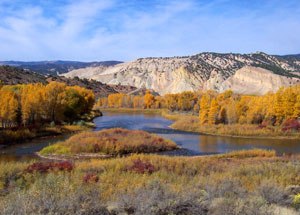 With blue wing olives as the primary food source, blue wing fly patterns are a primary "go-to" for fall anglers. But according to Vail Valley Anglers, size is more important than pattern, "Flies mimicking these bugs (BWO) should range from #18-24. This is more important than the actual fly pattern. Choose flies in olive or grey such as the trusty Parachute Adams, Sparkle RS-2, CDC Loop Wing Emerger or JuJu Baetis."
With blue wing olives as the primary food source, blue wing fly patterns are a primary "go-to" for fall anglers. But according to Vail Valley Anglers, size is more important than pattern, "Flies mimicking these bugs (BWO) should range from #18-24. This is more important than the actual fly pattern. Choose flies in olive or grey such as the trusty Parachute Adams, Sparkle RS-2, CDC Loop Wing Emerger or JuJu Baetis."
But going smaller isn't always the best, especially if you're after the monster brown trout. As the brown trout are moving around looking to spawn and are becoming more territorial, using larger streamers may help you catch the largest fish.
For more information on a list of flies to use in the fall and techniques for these flies, check out Vail Valley Anglers, Colorado Fly Fisher Blog, or Orivs,






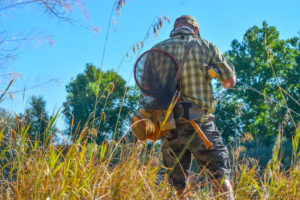 For the last 10 years, Denver Trout Unlimited has hosted the
For the last 10 years, Denver Trout Unlimited has hosted the  Chris Galvin, defending champion, hooked into one of the Mile High Stadium carp under the I-25 bridge and carefully moved it downstream in order not to disturb the pod. Ten minutes later, he tricked another for a masterful 2 fish within a few minutes. He added another only ten minutes before the morning session ended to take the lead going into the lunch break at Black-Black Cafe.
Chris Galvin, defending champion, hooked into one of the Mile High Stadium carp under the I-25 bridge and carefully moved it downstream in order not to disturb the pod. Ten minutes later, he tricked another for a masterful 2 fish within a few minutes. He added another only ten minutes before the morning session ended to take the lead going into the lunch break at Black-Black Cafe. Second place was snatched by Trevor Tanner and Kyle Richards. Third place went to the team of Frank Smethurst and rookie Vernon Naake with 3 fish for 70.38 inches.
Second place was snatched by Trevor Tanner and Kyle Richards. Third place went to the team of Frank Smethurst and rookie Vernon Naake with 3 fish for 70.38 inches.
 More than a century ago, John Muir extolled the virtues of wild nature as a place of renewal for city folk: “Thousands of tired, nerve-shaken, over-civilized people are beginning to find out that going to the mountains is going home; that wildness is a necessity; and that mountain parks and reservations are useful not only as fountains of timber and irrigating rivers, but as fountains of life.”
More than a century ago, John Muir extolled the virtues of wild nature as a place of renewal for city folk: “Thousands of tired, nerve-shaken, over-civilized people are beginning to find out that going to the mountains is going home; that wildness is a necessity; and that mountain parks and reservations are useful not only as fountains of timber and irrigating rivers, but as fountains of life.”
 opposed to the Superfund program, now supports the listing along with local communities and law makers. “I’m hopeful that with this designation the EPA will continue to collaborate with local, tribal and state officials and work to protect the local economy, maximizing local employment opportunities where possible, and providing adequate funding to ensure the cleanup begins as quickly as possible,” said US Rep. Scott Tipton.
opposed to the Superfund program, now supports the listing along with local communities and law makers. “I’m hopeful that with this designation the EPA will continue to collaborate with local, tribal and state officials and work to protect the local economy, maximizing local employment opportunities where possible, and providing adequate funding to ensure the cleanup begins as quickly as possible,” said US Rep. Scott Tipton.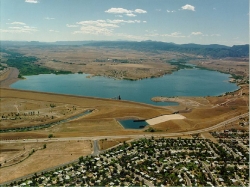 It was
It was 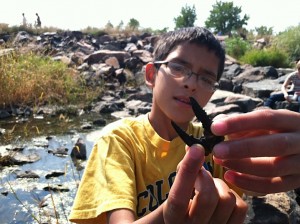 Projects like Stream Explorers have also helped the South Platte by teaching students about the river and how it is used for both human and aquatic needs. Learning how a city can impact the health of a river and how the river plays such a vital role to our way of life is important to teach to the next generation of river stewards.
Projects like Stream Explorers have also helped the South Platte by teaching students about the river and how it is used for both human and aquatic needs. Learning how a city can impact the health of a river and how the river plays such a vital role to our way of life is important to teach to the next generation of river stewards. Colorado Trout Unlimited, it's chapters, and volunteers helped Colorado Parks and Wildlife clip fins of Cutbow Trout as part of CPW's ongoing study of diploid vs triploid trout in Eleven Mile Reservoir.
Volunteers, along with staff from CPW helped clip over 26,000 fish in just the first day at the Mt. Shavano Fish Hatchery in Salida. Over the last two years, 97 volunteers helped clip over 148,00 fish in a six day period.
Colorado Trout Unlimited, it's chapters, and volunteers helped Colorado Parks and Wildlife clip fins of Cutbow Trout as part of CPW's ongoing study of diploid vs triploid trout in Eleven Mile Reservoir.
Volunteers, along with staff from CPW helped clip over 26,000 fish in just the first day at the Mt. Shavano Fish Hatchery in Salida. Over the last two years, 97 volunteers helped clip over 148,00 fish in a six day period. The fish used in this study are Rainbow X Cutthroat hybrid trout. Or commonly known as Cutbow trout.
The fish used in this study are Rainbow X Cutthroat hybrid trout. Or commonly known as Cutbow trout.
